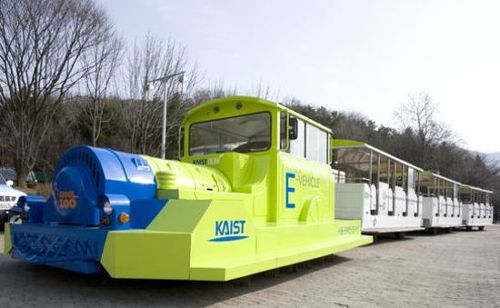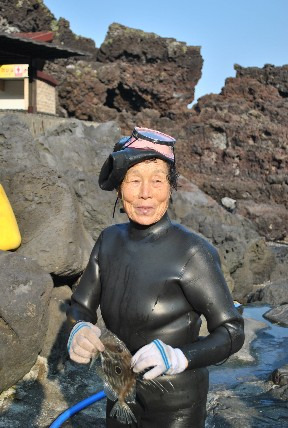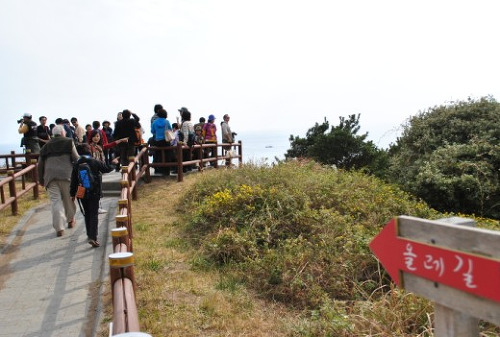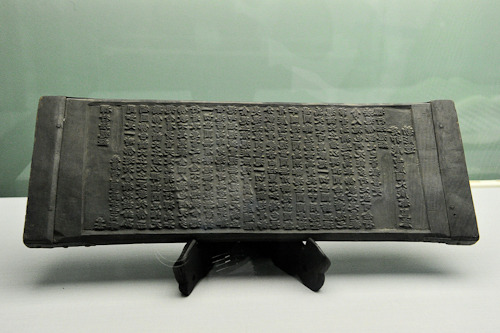Thursday, December 23, 2010
The 3rd Award Ceremony and 4th Orientation of World Students in Korea
Here we are )))
Wednesday, December 15, 2010
The Times 50 Best Inventions of 2010
Eco-friendly vehicle invented by KAIST
The Online Electric Vehicle (dubbed OLEV) manufactured by the Korea Advanced Institute of Technology (KAIST) was included in the 50 Best Inventions of 2010 published by The Times, along with Apple’s iPad, Google’s Driverless Car, Sony’s Alpha A55 Camera and others. Also included was the English-Teaching Robot invented by the Korea Institute of Science and Technology (KIST).

In the OLEV are embedded electric power strips that provide electromagnetic power to the vehicle, wirelessly, charging an onboard battery and powering the bus’s electric motor.
The Times introduced the OLEV as an advanced green growth technology that could speed up the commercialization of electric cars and also as the world’s one and only online electric vehicle.
The system’s creators at the KAIST say, “The technology not only eliminates pollution, but also alleviates the problems usually associated with hybrid vehicles such as heavy batteries, lengthy charging and limited range.”
Korean technology opens up a new horizon
The OLEV has been on a test operation since last March at the Seoul Amusement Park. It was also presented during the G20 Seoul Summit in November in front of COEX, garnering outstanding reviews. Furthermore, the vehicle is scheduled to be featured next month in the TV program “Into the Future” of Discovery channel.
The OLEV received mixed reviews in the early stage of its development. Although it is an innovative technology that was meant to pursue both green growth and economic profit, some voiced the car’s low practicality as the cost of planting electric power strips under the pavements would be quite steep. Nonetheless, its inclusion in The Times list is without a doubt a distinct acknowledgement of its potential.
The English-Teaching Robot
The other Korean item that made in the Times list is the English-Teaching Robot nick-named “Mero,” developed by the Korea Institute of Science and Technology (KIST).

The robots can move in any direction and can follow human facial expression!s. They are not only effective teachers, but the students also enjoy interacting with their new, fun, and cool school “staff.”
While the robots are used primarily in support roles for real human teachers, the Time Magazine called them a “job terminator,” saying they could potentially replace the native speakers currently employed in Korean schools.
Although there remain issues of economic feasibility as well as ethics, both inventions indicate excellent capacity of Korean universities as future leaders of world science and technology.
Sweet December. Story of the month
Traditional Jeju Culture and Haenyeo (sea women)
The twenty foreign journalists, though still somewhat fatigued from the intense reporting they had for the G20 Seoul Summit, participated in the Jeju tour with great zeal and curiosity, especially for the much talked about Olle Road and Jeju haenyeo.
On the first day of their tour, Jeju greeted the journalists with an unusually clear, azure sky and a picture-perfect coast line.
At the center of attention in the tour was, of course, the haenyeo – Jeju’s sea women. A journalist for Tokyo Newspaper expressed his special interest for Jeju haenyeo, saying although Japan also has something like sea women he had never seen the Jeju haenyeo. As four, five haenyeo dove into the sea and began their “sea-picking” routine, the group of visitors all flocked to the water in excitement to take photos.

<The group of foreign journalists all flocked to the water in excitement to take photos.>
Haenyeo dive into 20m deep into the ocean and collect sea products, holding their breath for as long as two minutes. Holding breath is hard enough; but doing that in the middle of cold sea water, swimming AND collecting things? What an amazing feat!
As one of the haenyeo, a 76-year-old sea veteran, pulled out of the water and showed a “domchi” which is a very rare catch, a big applause erupted among the journalists. The elderly haenyeo has been sea-picking since the age of 15.
But sadly, what used to amount to 15,000 Jeju haenyeo has now plummeted to a mere 5,600. And most of them are in their sixties and seventies. Those in their thirties are just a handful now, less than a dozen.

<As one of the haenyeo, a 76-year-old sea veteran,
pulled out of the water and showed a 'domchi'>
Perfect Harmony of the Sea and the Cliffs
The foreign journalists were once again amazed and awed by the beauty of Seongsan Ilchulbong, a peak that rose from under the sea in a volcanic eruption over 100,000 years ago.
Seongsan Ilchulbong is located on the eastern end of Jeju Island and there is a huge crater at its top. With the 99 sharp rocks surrounding the crater, it looks like a gigantic crown. While the southeast and north sides are cliffs, the northwest side is a grassy hill, forming a truly distinctive ambience.
The journalists concluded their first day with a visit to Chyeonjiyeon Waterfall, and their second day was finally the much anticipated Olle Road.
The Olle walking path opened its first route in 2007 and is now furnished with 22 routes of 357km. In the local Jeju dialect, “Olle” was originally used to refer to the narrow path between the street and one’s doorstep. The hiking trail was founded by Myung-Sook Suh who was inspired upon hearing from a certain English tourist that he had healed his hurt soul walking the Jeju roads.

The route the journalists trod that day was Route 10 which is a course a little more taxing than a leisurely walk. You will be able to enjoy a scenic view of cliffs and the ocean. This particular route was declared as “Jeju Olle-Switzerland Friendship Road” last April upon establishing an MOU with the Swiss tourism administration. After the good amount of exercise followed, of course, a sumptuous meal composed of just-caught Jeju sea food and makgeolli.
At the end of the delightful tour, the journalists expressed their wish for having more nature-oriented tourist spots like the Jeju Olle Road. Although they may be somewhat less convenient than those equipped with first-rate technology and amenities, sometimes what we want these days are places that are preserved as they originally were – somewhere we can rest and heal our jaded souls.
Thursday, December 9, 2010
Wednesday, December 1, 2010
Korean Grafted Cactus Fascinates the World
Let us pay some attention to the newly developed Korean grafted cactus that comes under such sweet names as “seolhong,” “hoohong,” and “saekdong.”
The usual association with cactus is some thorny, misshapen, rough-looking plant standing under the scorching sun in the desert.Well, time to shatter that association.
<Researchers at Rural Development Administration reviewing the quality of the grafted cactus>
The grafted cactus of Korea comes in numerous splash colors (red, pink, yellow, orange….) and sizes (a cute little cauliflower-like thing the size of your fist!).
The Rural Development Administration(RDA) exhibited its newly developed grated cactus at the horticulture fair held last November 11. The Korean grafted cactus has been garnering excellent reviews from the worldwide horticulture market with its annual volume of export exceeding USD 2 million to over 30 countries including the U.S. and the Netherlands, the leading floriculture nation.
At the flower fair, a series of rigorous eval!uation was conducted on the presented cactuses including how vivid the color is, how firm it is, its capacity to produce “baby” plant, its commercial potential and so on.
After passing through a set of meticulous tests and screening, 4 qualified cactuses will be selected to be distributed to the farms. Then they will first undergo a test production to be followed by mass cultivation. The RDA aims at USD 3 million annual export by 2012.
Well, at this rate, not reaching for stars!
Korea on the road to the first class
Chairwoman Lee Bae-Yong of the Presidential Council on Nation Branding on November 15 gave a lecture for the KBS program “The Road to First Class.”
 <Web site of the KBS program “The Road to First Class”>
<Web site of the KBS program “The Road to First Class”>
The lecture was on the subject of Korea’s nation brand and the impact of the G20 Seoul Summit.
“Made in Korea” Impact

<Tripitaka Koreana woodblock at Haeinsa temple (designated a UNESCO World Heritage Site)>
“Korea, as seen in its age-long history and countless cultural relics, has admirable spirits – perseverance, cooperative and pacifist inclination, modesty, warmhearted regards for others. It is important that we remember these timeless virtues of ours,” Lee stressed.
 <Web site of the KBS program “The Road to First Class”>
<Web site of the KBS program “The Road to First Class”>The lecture was on the subject of Korea’s nation brand and the impact of the G20 Seoul Summit.
“Made in Korea” Impact
“Despite the increasing sales of Korean products globally nowadays,” Chairwoman Lee explained, “they still get about a 30% discount compared to similar products made by some other nations because of Korea’s undervalued nation brand.”
Giving examples of French perfume and wine which are products backed up by the country’s strong nation brand, Lee emphasized the importance of nation brand in generating economic profits.
“We need to work on increasing trust and preference for so-called “Made in Korea.” Also, it is getting more and more important nowadays to have strong “software” such as cultural content, human resources and spiritual values as well as hardware.”
Lee also touched upon Korea’s numerous timeless cultural heritages, saying, “I wish to share Korean values and spirits that are imbued in those historic and cultural legacies with the world. Korea’s astounding growth in the 20th century was made possible only because it was backed up by such virtues as harmony, sharing, communication, regards for life and nature.”
“To raise Korea’s nation brand, it is important to have active civic participation. The Council will make best efforts to achieve the goal with 5 major areas of work that we designated which include contributing to the international community, cultivating global citizenship, promoting multiculturalism, developing attractive culture and tourism, and showcasing advanced technology.”

<Tripitaka Koreana woodblock at Haeinsa temple (designated a UNESCO World Heritage Site)>
“Korea, as seen in its age-long history and countless cultural relics, has admirable spirits – perseverance, cooperative and pacifist inclination, modesty, warmhearted regards for others. It is important that we remember these timeless virtues of ours,” Lee stressed.
* Chairwoman Lee Bae Yong’s lecture on the program “The Road to First Class” (aired on November 20) can be viewed at the following web page:
Subscribe to:
Posts (Atom)





